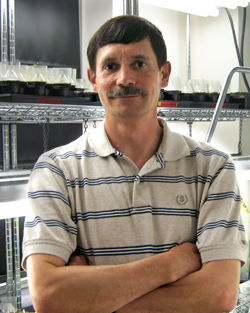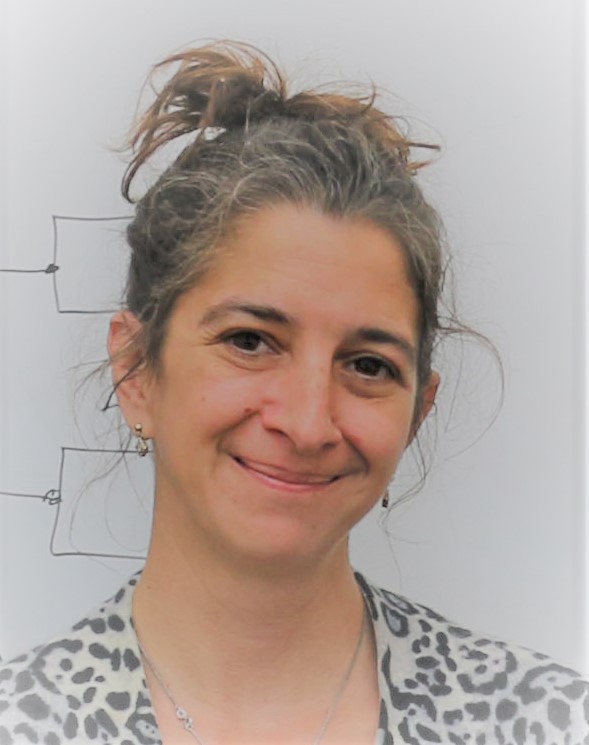 Karthik Anantharaman – Bacteriology
Karthik Anantharaman – Bacteriology
Microbial metabolism has the potential to impact the evolutionary ecology of a system across various spatial and temporal scales ranging from the scope of a single cell, ecosystem, to the earth as a whole. Understanding how microbial communities function is critical to unraveling how they underpin human health, and predicting global ecosystem dynamics, especially in the context of environmental perturbations like anthropogenic global change. The broad goal of our research is to unravel how (i) fine-scale genomic diversity impacts microbial community structure and function across various environments, (ii) individual microbes function in a community context, and (iii) microbes impact biogeochemical cycling at various spatial and temporal scales.
 David Baum – Botany
David Baum – Botany
I take the view that life began as autocatalytic ensembles of chemicals adsorbed onto mineral surfaces. In the presence of a constant flux of food and energy, such systems could collectively propagate (grow) and, through an analog of group selection called neighborhood selection, evolve adaptively. This model suggests that cells arose late, possibly via selection for dispersal among discontinuous mineral surfaces, and allows that a nucleic acid-based genetic system might also have originated long after adaptive evolution kicked-in. More concretely, this hypothesis implies that we might be able to induce the formation of new life-like chemical ensembles in the laboratory and detect them via their capacity to evolve adaptively.
 Michael Cox – Biochemistry
Michael Cox – Biochemistry
Many classes of DNA rearrangements occur in all cells and play important roles in gene regulation, development, carcinogenesis, and evolution. The goal of this laboratory is to understand how these genetic rearrangements come about, and how they are regulated. To this end, we study a range of bacterial enzymes involved in recombinational DNA repair, both in vivo and in vitro. Part of the effort involves screens to identify relevant enzymes with new and sometimes unanticipated functions. In addition to understanding the enzymes themselves, we are increasingly exploring the intersection of recombination with other processes in DNA metabolism, and seeking an understanding of the factors that limit recombination within a cell.
 Katrina Forest – Bacteriology
Katrina Forest – Bacteriology
The study of life is the examination of interactions; cooperations of species within ecosystems, adaptation of living organisms to environment stimuli, and partnerships of atoms within the active sites of enzymes. Our lab studies biological interactions at the molecular level. We are particularly interested in the structures, functions, and mechanisms of bacterial proteins with consequences to prokaryotic physiology and symbiosis with eukaryotes. Using X-ray crystallography as our primary tool, we draw on our diverse backgrounds in microbiology, biophysics, biochemistry and chemistry to uniquely approach our two main areas of research: Type IV pili and bacteriophytochromes.
 Samuel Gellman – Chemistry
Samuel Gellman – Chemistry
Microbial metabolism has the potential to impact the evolutionary ecology of a system across various spatial and temporal scales ranging from the scope of a single cell, ecosystem, to the earth as a whole. Understanding how microbial communities function is critical to unraveling how they underpin human health, and predicting global ecosystem dynamics, especially in the context of environmental perturbations like anthropogenic global change. The broad goal of our research is to unravel how (i) fine-scale genomic diversity impacts microbial community structure and function across various environments, (ii) individual microbes function in a community context, and (iii) microbes impact biogeochemical cycling at various spatial and temporal scales.
 Simon Gilroy – Botany
Simon Gilroy – Botany
We are interested in how plants sense and respond to their environment and how these signals regulate plant development. The research emphasis of the lab is to try and understand these processes at the cellular level. We combine advanced microscopy approaches such as confocal microscopy with biochemistry and molecular biology to address a wide range of biological questions: How do plants sense and respond to abiotic stresses? How do roots and shoots sense and respond to gravity and touch stimuli? How do plants regulate growth? How do plants respond to the spaceflight environment?
 Chris Hittinger – Genetics
Chris Hittinger – Genetics
The Hittinger Lab uses yeast carbon metabolism as a model for basic bioenergy, biomedical, and evolutionary research. Our research interests and integrated approaches are at the intersection of biodiversity; biochemistry; biotechnology; and functional, ecological, and evolutionary genomics. Ongoing projects are focused on understanding the origin and evolution of aerobic fermentation, yeast ecology and biodiversity, genetic variation in natural and industrial yeasts, genome engineering and synthetic biology, and the metabolism of alternative carbon sources (e.g. galactose, maltose, xylose) that may have bioenergy and brewing applications.
 Hiroshi Maeda – Botany
Hiroshi Maeda – Botany
As sessile organisms, plants produce a tremendous array of organic compounds using CO2, underground nutrients, and sunlight energy to survive in challenging ecological niches. These plant-derived metabolites are also widely used as our food, medicine, material, and energy. Although extensive efforts are currently being made to understand plant-specific metabolic pathways, we still have a limited knowledge of how plants allocate available carbon, fixed by photosynthesis, to a variety of downstream metabolic pathways. This fundamental knowledge gap also creates a bottleneck in effective plant breeding and metabolic engineering for the improved production of useful plant-derived compounds. My research program focuses on understanding the organization and regulatory mechanisms of the plant shikimate and aromatic amino acid pathways.
 Patrick Masson – Genetics
Patrick Masson – Genetics
Roots’ primary functions are to take up the water and mineral ions required for plant growth and development, and to anchor the plant to its substratum. Because a plant spends its entire life cycle where it germinated, its roots have to colonize the soil in order to feed the plant without depleting its immediate environment of essential nutrients. They do so by developing specific patterns of growth which are dictated by environmental parameters. Hence, roots are capable of using the directional information provided by the gravity vector, light, touch, gradients in temperature, humidity, ions, chemicals and oxygen to guide their growth. My laboratory is using molecular genetic strategies in Arabidopsis thaliana to study the molecular mechanisms that allows roots to adopt growth behaviors in response to the mechanical parameters present in their environment.
 Katherine McMahon – Civil and Environmental Engineering
Katherine McMahon – Civil and Environmental Engineering
The broad objective of my research program is to improve our capacity to predict and model microbial behavior, while searching for novel biologically mediated transformations that can be harnessed for engineering applications. We study the microbial ecology of both natural and engineered systems. We use molecular tools to investigate microbial community structure and function in lakes and activated sludge. We also use high-frequency environmental sensor networks to measure important variables that we know influence bacterial communities. Sensor data provided through the Global Lake Ecological Observatory Network guides our adaptive sampling efforts and provides rich contextual data for our studies of lake bacterial community ecology. We are particularly interested in phosphorus, nitrogen, and carbon cycling in lakes and how this relates to eutrophication and water quality. We are using highly resolved time series sampling of multiple lakes, combined with metagenomics and meta-transcriptomics to explore how different lineages of freshwater bacteria contribute to this cycling.
 Nicole Perna – Genetics
Nicole Perna – Genetics
Our research is directed at understanding the molecular evolution of complex traits like virulence and host range. Our work focuses on the Enterobacteriaceae, a bacterial family with members occupying diverse environmental niches including plant and animal hosts with lifestyles ranging from mutualism to pathogenesis. We use both computational and experimental approaches to study the rates, patterns, mechanisms and phenotypic consequences of genome-scale evolution. Some of our current areas of research are: 1) Specialization in either plant or animal hosts, 2) Recombination within and between species, populations and strains, 3) Rates and patterns of genome rearrangement, 4) Regulatory evolution and energy metabolism, 5) Evolution of chemotaxis and signaling systems. We also develop tools and resources for genome analysis, including a multiple genome alignment and visualization system, and an interactive web-based genome database and analysis platform.
 Michael Sussman – Biochemistry
Michael Sussman – Biochemistry
Plants respond to environmental changes such as drought by a complex network of signaling proteins whose levels of protein phosphorylation are modulated throughout the cell. Our lab is using a mass spectrometric-based quantitative phosphoproteomic pipeline to identify the key components of these signaling networks initiated by hormones and osmosensing receptor proteins at the plant plasma membrane. Arabidopsis thaliana is the model organism under study since it provides facile genetic tests for hypotheses derived from the chemical analyses to ensure that the measured changes play important roles in planta.